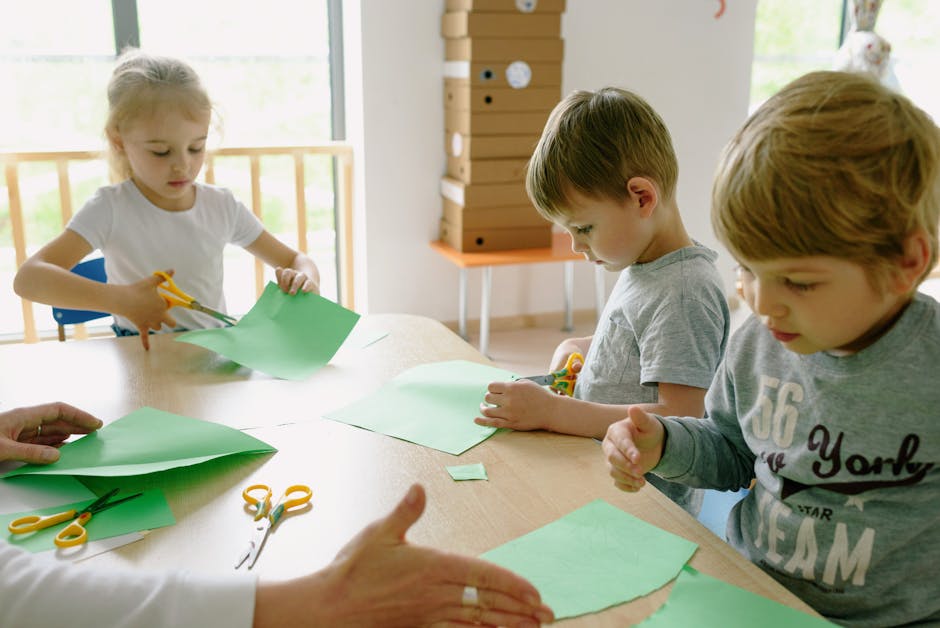Mastering the Art of Group Projects: A Comprehensive Guide to Success
Group projects are a staple in academic and professional settings, requiring individuals to collaborate, communicate effectively, and leverage each other’s strengths to achieve a common goal. While the idea of working in a group can be daunting for some, the benefits of collective effort can lead to innovative solutions, shared knowledge, and a sense of camaraderie among team members. In this comprehensive guide, we will delve into the strategies, tips, and best practices to excel in group projects, ensuring a smooth and successful collaboration every time.
The Power of Collaboration

Collaboration is the cornerstone of group projects, allowing individuals to combine their unique skills, perspectives, and experiences to produce high-quality work. By working together, team members can leverage the collective intelligence of the group, leading to more creative solutions and better outcomes than working alone. In a study conducted by Harvard Business Review, researchers found that teams that collaborate effectively outperform individuals working solo by up to 20 percent.
Effective Communication is Key

One of the most critical aspects of successful group projects is effective communication. Clear and open communication ensures that everyone is on the same page regarding project goals, timelines, and individual responsibilities. Without effective communication, misunderstandings can arise, leading to delays, conflicts, and subpar results. Utilizing tools such as Slack, Microsoft Teams, or Google Docs can streamline communication and keep everyone in the loop.
Establishing Roles and Responsibilities

Assigning roles and responsibilities is essential for ensuring that each team member knows what is expected of them and can contribute effectively to the project. By dividing tasks based on each member’s strengths and expertise, teams can work more efficiently and capitalize on individual skills. For example, designating one team member as a project manager, another as a researcher, and another as a presenter can help streamline the workflow and ensure that all aspects of the project are covered.
Setting Clear Goals and Deadlines

Setting clear goals and deadlines is crucial for keeping the project on track and ensuring that everyone is working towards the same objective. By establishing SMART goals (Specific, Measurable, Achievable, Relevant, Time-bound) and breaking the project into smaller milestones, teams can stay focused and motivated throughout the process. Regular check-ins and progress updates can help keep everyone accountable and ensure that the project stays on schedule.
Building Trust and Respecting Differences
Building trust among team members is essential for fostering a positive and productive working environment. Trust allows individuals to be open, honest, and vulnerable with one another, leading to better collaboration and deeper connections. Respecting differences in opinions, backgrounds, and working styles is also crucial for creating a diverse and inclusive team dynamic. By valuing and appreciating each other’s unique perspectives, teams can leverage their differences to drive innovation and creativity.
Handling Conflict and Providing Constructive Feedback
Conflict is a natural part of working in a group, as individuals may have different ideas, opinions, and approaches to solving problems. However, how teams handle conflict can make or break the project. By addressing conflicts openly and constructively, teams can work through differences and find common ground. Providing and receiving constructive feedback is also essential for personal and professional growth. By offering feedback in a respectful and specific manner, team members can help each other improve and excel in their roles.
Embracing Diversity and Inclusion
Diversity and inclusion are more than just buzzwordsthey are essential components of successful group projects. By embracing diversity in all its formsgender, race, ethnicity, age, background, and moreteams can tap into a wealth of perspectives, experiences, and ideas. Inclusive teams are more innovative, creative, and adaptable, leading to better outcomes and a stronger sense of community among team members. Creating a safe and welcoming space for everyone to contribute ensures that all voices are heard and valued.
Common Misconceptions
One common misconception about group projects is that one person can do all the work while others coast by. This can lead to resentment, frustration, and an unfair distribution of effort. Another misconception is that group projects are a waste of time and effort, as individuals may feel that they could have produced better results on their own. However, when approached with the right mindset and strategies, group projects can be incredibly rewarding and lead to personal and professional growth.
Conclusion
In conclusion, excelling in group projects requires a combination of effective communication, collaboration, goal-setting, trust-building, conflict resolution, and diversity and inclusion. By leveraging each team member’s strengths, respecting differences, and working towards a common goal, teams can achieve great results and create a positive and productive working environment. Remember, the power of teamwork lies in the ability to combine individual talents and perspectives to achieve something greater than what one person can accomplish alone. So, next time you find yourself in a group project, embrace the challenge, communicate openly, and work together towards a shared vision of success.
Remember, success is not just about the end resultit’s also about the journey and the relationships you build along the way. Group projects may be challenging at times, but they also provide valuable opportunities for growth, learning, and personal development. So, the next time you’re faced with a group project, approach it with enthusiasm, an open mind, and a willingness to collaborate. Who knows, you may just discover new skills, make lasting connections, and achieve great things together.




